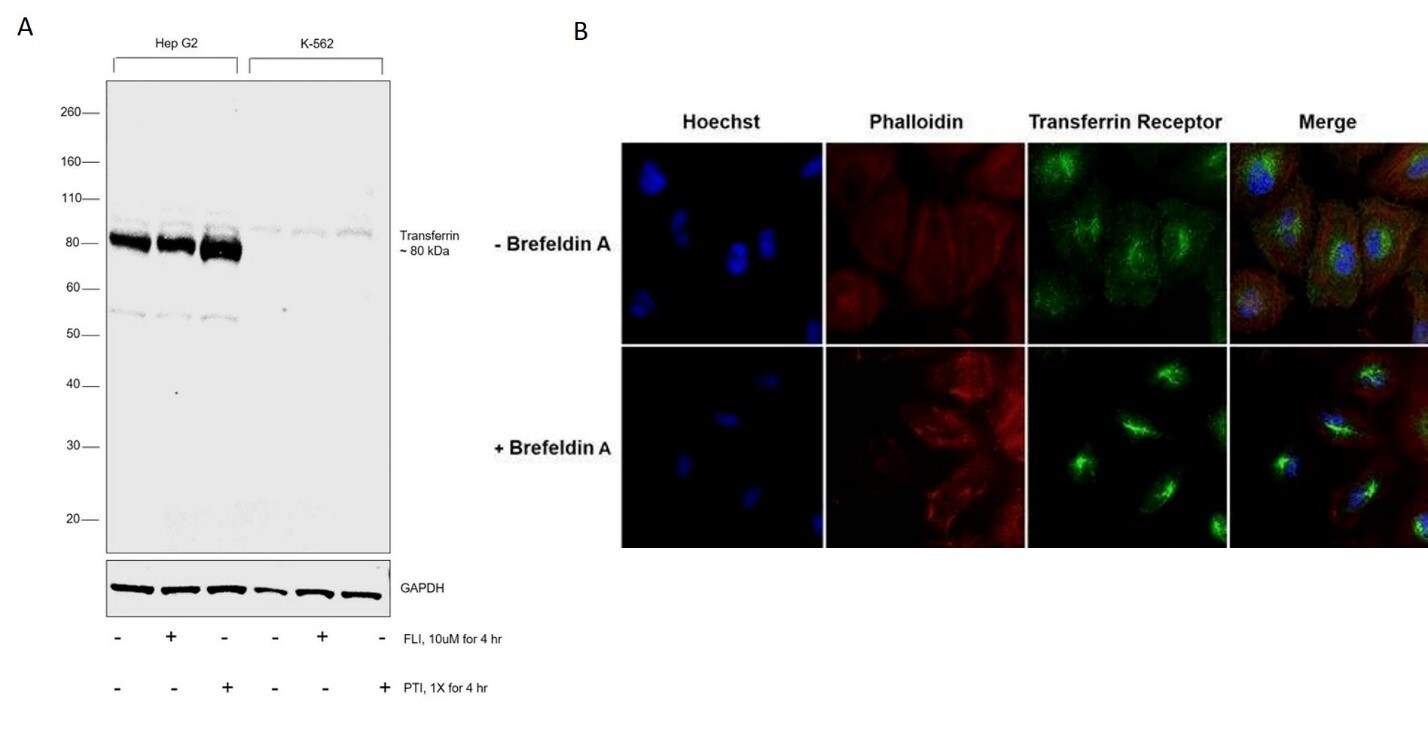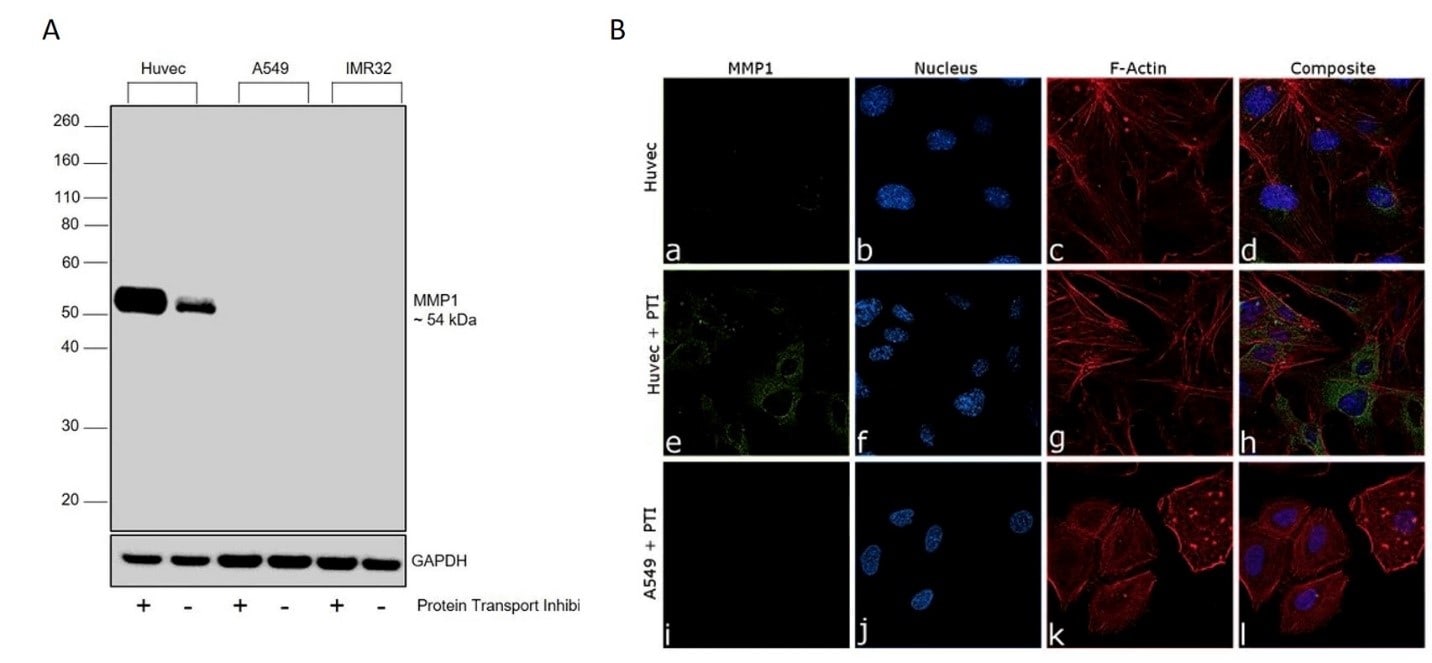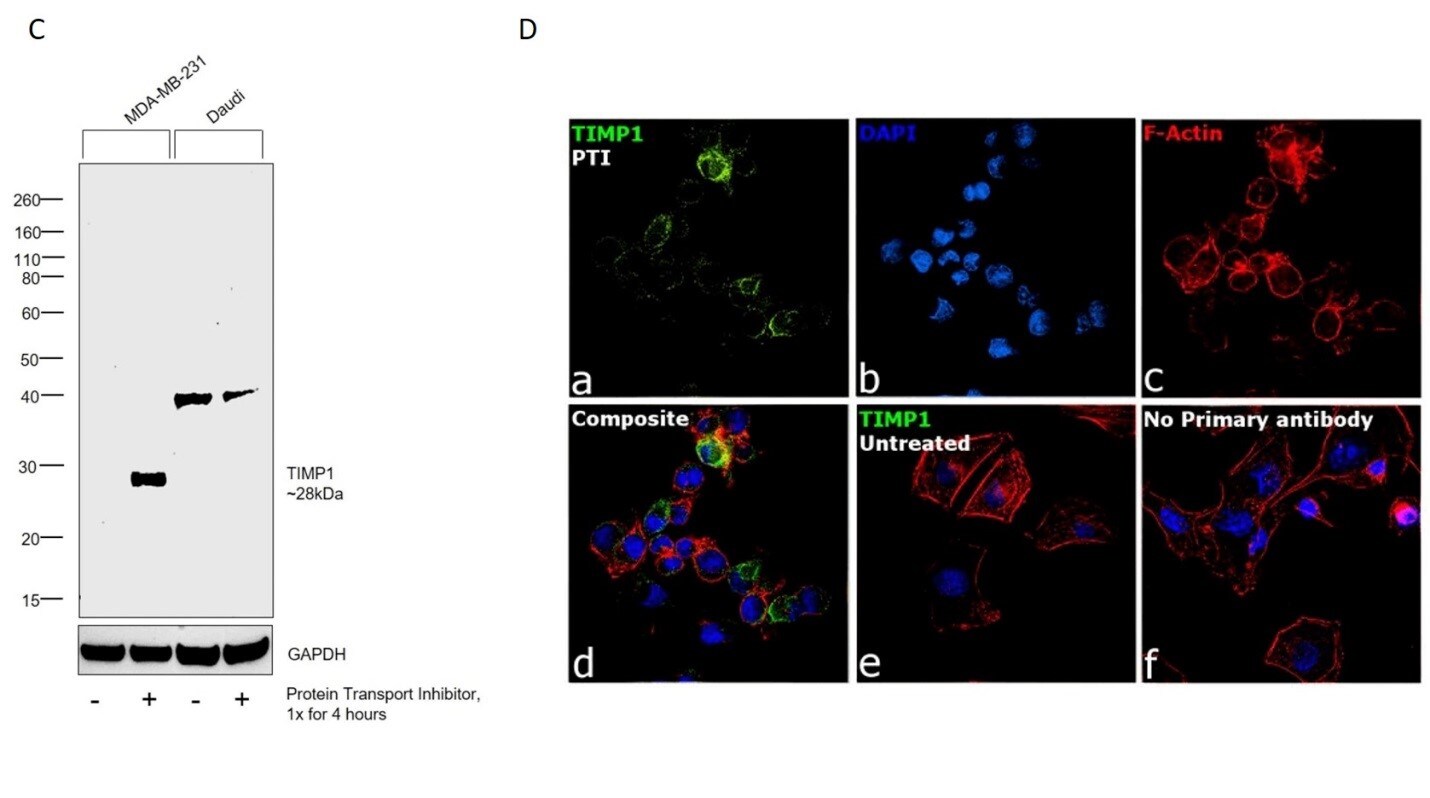Anusha Sivakumar and Rajeev K. Pandey explain the challenges of studying secretory proteins in the western and immunofluorescence workflow and how blockers could be used in processing these secretory proteins.
The Secretory Pathway
The secretory pathway maintains cellular homeostasis and communication by ferrying soluble proteins to the plasma membrane and extracellular medium. These proteins are processed in the rough endoplasmic reticulum (rER) and are trafficked into the cis-golgi network. These cis- stacks (nearest to the ER) physically change position to trans-golgi reticulum (farthest from the ER), enabling the migration of the luminal protein cargo into destined vesicles for secretion. TGN46, Golgin-97, LMAN1, Grasp65 and ARF1 are some proteins that aid in processing the secretory proteins and act as potential markers for different stages of cargo movement within the cell.
Unlocking Secretory Proteins
The challenge in studying secretory proteins in the western and immunofluorescence workflow is capturing these proteins within the cell and mapping their secretory pathway from their synthesis in ribosomes to the release. Brefeldin A (BFA), Monensin (MON), Bafilomycin A1 (Baf A1), and FLI-06 (1,4,5,6,7,8-Hexahydro-2,7,7-trimethyl-4-(4-nitrophenyl)-5-oxo-3-quinolinecarboxylic acid cyclohexyl ester) are some agents that cause intracellular accumulation of unprocessed secretory proteins. Where MON acts as an ionophore for Na+/H+ exchanger in golgi, BFA blocks proteins that activate ARF1 required for dissociation of golgi-derived vesicles. We show here the potential of BFA and MON, alone or in combination, for intracellular enrichment of secretory proteins like Transferrin, Transferrin Receptor, Matrix Metalloproteinase-1 and Tissue Inhibitor of Matrix Metalloproteinase-1 and detection with specific antibodies.
Transferrin (Tf) and transferrin receptor (TfR) interactions are evolutionarily conserved components of the iron homeostasis machinery and is one of the most well-studied shuttling models in cell biology. Tf bound with ferric irons are endocytosed into the cell along with TfR for intracellular iron release and gets trafficked back into the circulation by vesicles from the plasma membrane (Figure.1A). BFA (Product # 00-4506-51) helps in accumulating TfR in the golgi (Figure.1B), thereby, making it possible to understand the molecular basis for several iron-deficiency diseases.
Figure 1 A) Western blot analysis demonstrates PTI-mediated enrichment of Transferrin in Hep G2 cells using Transferrin Polyclonal Antibody (Product # PA3-913). Antibody specificity was demonstrated by relative expression of Transferrin observed in Hep G2 (liver cells) in comparison to K-562 (bone marrow derived lymphoblasts). Chemiluminescent detection was performed using Pierce ECL Western Blotting Substrate (Product # 32209) and iBright FL1000 Imaging System. B) Immunofluorescence using Transferrin Receptor monoclonal antibody (Product # MA5-11441). Detection of undispersed Transferrin Receptor upon the disruption of Golgi structure in HeLa cells with BFA demonstrated antibody specificity.
Protein Transport Inhibitor
BFA and MON as a cocktail in Protein Transport Inhibitor (PTI) (Product # 00-4980-93) aids in internalizing extracellular matrix protein and improved the detection of MMP1 and TIMP1 in western and immunofluorescence applications. MMP1 (Collagenase-1), a prototype secretory enzyme of all the interstitial collagenases, and its inhibitor, TIMP1 are often expressed in equilibrium to maintain the degradation and synthesis dynamics of collagen fibers in the ECM. Dysregulation in this balance is reported to have resulted in invasion, vascularization and angiogenesis in several cancers, cardiovascular disorders and inflammation. PTI allows for relative enrichment of MMP-1 in endothelial cells like HUVEC (Figure 2A, 2B) and TIMP1 in invasive breast cancer line, MDA-MB-231 (Figure 2C, 2D), in comparison to other cell lineages.
Figure 2. A) Western blot analysis and immunofluorescence assay. Chemiluminescent detection was performed using Novex® ECL Chemiluminescent Substrate Reagent Kit (Product # WP20005). B) shows PTI mediated enrichment of MMP1 in HUVEC cells using MMP1 Polyclonal Antibody (Product # PA5-27210). Antibody specificity was demonstrated by relative expression of MMP1 observed in HUVEC (endothelial cells) in comparison to A549 (epithelial cells). C) and immunofluorescence assay shows PTI mediated enrichment of TIMP1 in MDA-MB-231 using TIMP1 Monoclonal Antibody (Product # MA5-13688). Chemiluminescent detection was performed using Novex® ECL Chemiluminescent Substrate Reagent Kit (Product # WP20005).

Several cytokines, ECM and serum transport proteins are not extensively studied because of lack of appropriate agents to trap them at specific sites in the secretory transport pathway. Blockers like PTI could aid in elucidating the mode and need for secretion in disease pathogenesis and pave the way for identifying therapeutic drug targets for cancers and other diseases.
Additional Antibody Blogs
Let’s get ‘specific’ about the TNFR pathway!
DIY Neurons for antibody validation
Translate to Invitrogen antibodies for your ribosomal protein research!
Drivers of the Chromosomal Passenger Complex
PRMTs: Role in epigenetic regulation
References
1. Brefeldin A: The advantage of being uncompetitive. Chardin, P & McCormick, F. doi: 10.1016/S0092-8674(00)80724-2.
2. Dissection of the golgi complex: Monensin inhibits the transport of viral membrane proteins from medial to trans golgi cisternae in baby hamster kidney cells infected with Semliki Forest virus. Griffiths, G. et.al. doi: 10.1083/jcb.96.3.835.
3. Inhibition of cargo export at ER exit sites and the trans-golgi network by the secretion inhibitor FLI-06. Yonemura, Y. et.al. doi: 10.1242/jcs.186163.
4. Endocytosed transferrin receptors recycle via distinct dynamin and phosphatidylinositol-3-kinase dependent pathways. Van Dam, EM. et.al. doi: 10.1074/jbc.M206271200
5. Matrix metalloproteinase-1-mediated up-regulation of vascular endothelial growth factor-2 in endothelial cells. Mazor, R. et.al. doi: 10.1074/jbc.M112.417451.
For Research Use Only. Not for use in diagnostic procedures.
V excellent paper on protein trafficking